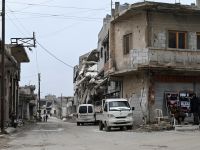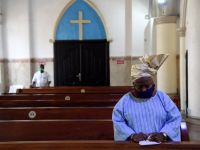Women’s shelters, by design, work to tend to the mental health of their residents, but one local organization is starting to address an issue that has previously fallen through the cracks: the mental health of staff.
The responsibilities of women’s shelters are many. In general, they aim to protect women and girls, and often their children, from violence or the threat of violence, typically coming from male members of their family. Integral to that is providing residents with the psychological, socio-economic and legal resources to live safely and autonomously.
Shelters run by the ABAAD Resource Center for Gender Equality also provide counseling and vocational training and placement to their residents. “[We want to] empower them to be able to take a decision ... and start to build a new life for themselves,” Jihan Isseid, midway house program manager at ABAAD, said.
But many among the NGO’s staff may suffer deeply from the pressures of their job.
“We can receive at any time a call from husbands or family members, aggressing the staff,” Isseid told The Daily Star. “But we try at all times to be the sponge to absorb all reactions from the husband or family, and to turn it into something positive for the good of the survivors.”
“It’s a very hard, very critical job,” she said. “[There is psychological] transfer between the survivors [and the staff]. It’s very affective work for them.”
Isseid said that ABAAD has made mental health services available to staff at its shelters, including monthly group counseling sessions, creative therapy activities and up to four sessions with a psychotherapist, covered by the organization.
“Five years ago, no one talked about the self-care of the staff or the well-being of the staff,” Isseid said. “We need to build their resilience, and teach them to put distance between their [own] situation and the situation of the women, [so they are] more able to support them.”
ABAAD is not only interested in developing its own operations, but is also working to ease the complexities of shelter work in the wider region. The NGO Friday released a manual on founding and maintaining women’s shelters, created with input gathered from other shelter organizations in the Middle East and North Africa.
In part, the manual details the sorts of services, staff and organization principles that an effective shelter needs. For example, there should not be more than one staff member occupying a given role for every 15 residents, it says, and stays should range from one month to a year.
At the same time, the manual specifies the physical qualities that a shelter requires. Some address safety: Strong entrances that cannot be opened, a protection wall, bullet-proof and iron-barred windows and CCTV, inside and out.
But other physical qualities intend to promote the mental health and well-being of shelter residents. Natural light, art and color and outdoor spaces that can house gardens and recreational activities are all listed.
And to add to their list of duties, the manual explains that shelters should also raise awareness of gender-based violence and “pressure government” to ensure the safety of women through legislation.
“When we started looking to run shelters, we didn’t have any basic document to build on, to be as a guide for us,” Isseid said. ABAAD now hopes to develop a “training for trainers” program so that other NGOs and communities in the region can use the manual as a base.
However, “a big challenge we face is sustainable funding to continue our work,” she said, as the vast majority of their resources come from international donors such as UNICEF and UNHCR.
“Every year,” she said, “we are looking for new donors and new supporters who can support us.”
This article has been adapted from its original source.








